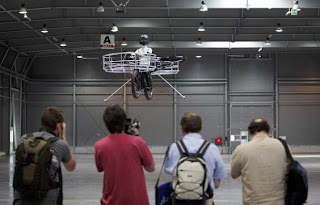| Click Here For Full Electronics Course |
Would you like to learn Electronics from the very beginning and in simple language? What about building several simple and fun Electronic circuits and Projects? If so you can Click Here for a very good Electronics Course in this regard (very helpful Electronics Bonuses are included for you for free).
Most of the time the students or those who want to learn Electronics do not know how and from where they should try to start, or when find a source they will be quickly engaged in boring, complicated and unnecessary mathematics and give up. That's why I selected this book to put it here for you. As an Electronics engineer I think this Electronics Tutorial which is a combination of Electronics theory, circuit building and
hobby Electronic projects can be a very good source to teach you the basics of Electronics and then show you several Basic Electronic circuits and Projects which are simple and fun to build. Also to make things easier still, You'll get important points covered in the chapters of the first book as Chapter Review Audios that you can download and listen to on a mobile device at your convenience.
The Course is written by "Greg S. Carpenter" who is an experienced person in the Electronics filed.
Along with this Course you'll get several valuable free Electronics bonuses included to help you to Learn even further and specially to enjoy of Electronics more than what you might think. For instance by building simple projects, circuits, and of course the simplest radio ever made in the world and so on you will learn more and more and of course enjoy when you see how simple you can make those things working!
The Course is written by "Greg S. Carpenter" who is an experienced person in the Electronics filed.
As he says his book is 100% Risk Free Guarantee, So I see no reason not to try it out to Learn Electronics and build several simple Electronics circuits by its given instructions.
After reading this book and then completing the hands-on mini course in the next book, you should come away with a extremely good basic understanding of Electronics.Along with this Course you'll get several valuable free Electronics bonuses included to help you to Learn even further and specially to enjoy of Electronics more than what you might think. For instance by building simple projects, circuits, and of course the simplest radio ever made in the world and so on you will learn more and more and of course enjoy when you see how simple you can make those things working!
If you have no idea what Electronics is or don't have any view about it please let me explain this ocean very briefly and in a very simple mode!
Electronics is a part of physics science & engineering that deals with the flow and control of electrons and the study of their behavior and of course their effects in vacuums, gases, conductors and of course semiconductors with devices which are created by engineers to use such electrons. This control of Electrons is accomplished by components that resist, carry, store, steer, select, switch, manipulate, and exploit the electron. By learning to understand Electronics properly you can notice how a circuit works or design and make a lot of different circuits and create your own projects by connecting the proper components together and feed them by correct Voltages!
What you'll get as the main Electronics Courses and some of free Electronics bonuses included for you for free are as follows:
 |
Introduction to basic electronics theory |
 |
Introduction to basic electronics circuit building |
 |
Basic Electronic Projects |
 |
A-B-C's of radio waves and antennas |
Soldering Tips Part 1 And Part 2 |
The complete package |










